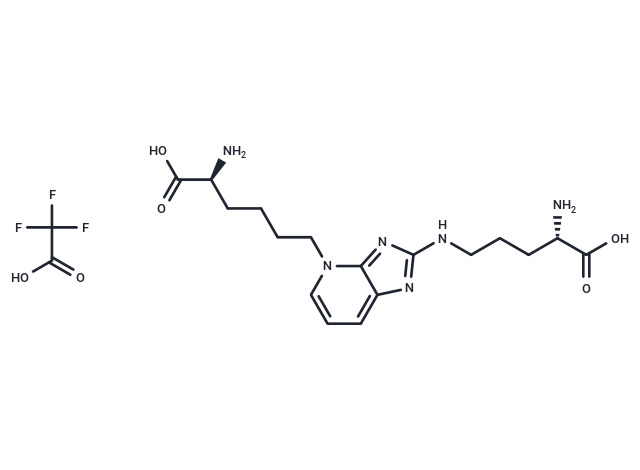 您的购物车当前为空
您的购物车当前为空
Pentosidine TFA
一键复制产品信息Advanced glycation end products (AGEs) are compounds that are produced through non-enzymatic chemical reactions when sugars bond with proteins or lipids, occurring in conditions such as diabetes, uremia, aging, and rheumatic arthritis. A specific receptor, known as RAGE, interacts with select AGEs to trigger cell signaling. Pentosidine, a prominently studied natural AGE, serves as a common biomarker for assessing AGE production. Although pentosidine levels can be determined through urine analysis, it is predominantly broken down prior to excretion.

Pentosidine TFA
一键复制产品信息Advanced glycation end products (AGEs) are compounds that are produced through non-enzymatic chemical reactions when sugars bond with proteins or lipids, occurring in conditions such as diabetes, uremia, aging, and rheumatic arthritis. A specific receptor, known as RAGE, interacts with select AGEs to trigger cell signaling. Pentosidine, a prominently studied natural AGE, serves as a common biomarker for assessing AGE production. Although pentosidine levels can be determined through urine analysis, it is predominantly broken down prior to excretion.
| 规格 | 价格 | 库存 | 数量 |
|---|---|---|---|
| 10 mg | 待询 | 8-10周 | |
| 50 mg | 待询 | 8-10周 |
产品介绍
| 产品描述 | Advanced glycation end products (AGEs) are compounds that are produced through non-enzymatic chemical reactions when sugars bond with proteins or lipids, occurring in conditions such as diabetes, uremia, aging, and rheumatic arthritis. A specific receptor, known as RAGE, interacts with select AGEs to trigger cell signaling. Pentosidine, a prominently studied natural AGE, serves as a common biomarker for assessing AGE production. Although pentosidine levels can be determined through urine analysis, it is predominantly broken down prior to excretion. |
| 分子量 | 492.45 |
| 分子式 | C17H26N6O4?CF3COOH |
| CAS No. | 225784-09-8 |
| 存储 | Powder: -20°C for 3 years | In solvent: -80°C for 1 year | Shipping with blue ice/Shipping at ambient temperature. |
计算器
体内实验配液计算器
以上为“体内实验配液计算器”的使用方法举例,并不是具体某个化合物的推荐配制方式,请根据您的实验动物和给药方式选择适当的溶解方案。
剂量转换
对于不同动物的给药剂量换算,您也可以参考 更多





 还可以
还可以
 |
|